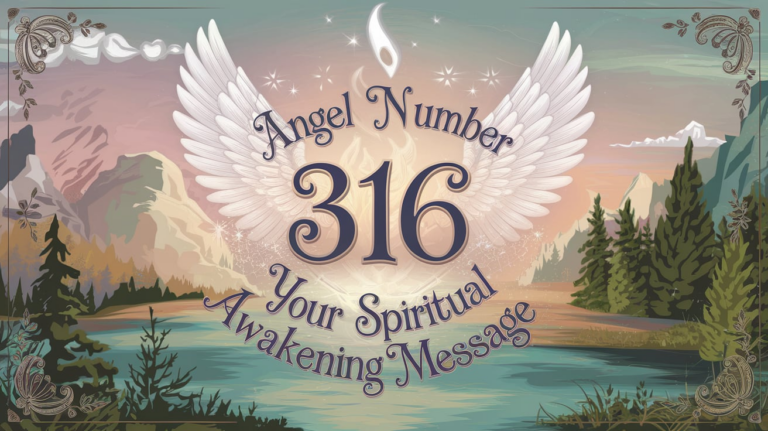The Category Game has always been a favorite in my home. Whether it’s a family gathering or a casual night with friends, this simple yet dynamic game never fails to bring out laughter and some surprising answers.
Beyond the fun, it’s a powerful tool for improving creativity, quick thinking, and vocabulary. I’ve personally seen how it helps kids learn new words and adults sharpen their mental reflexes under pressure.
In this blog, I’ll share everything you need to know about playing and winning the Category Game. From easy rules and winning strategies to creative variations, I’ve got you covered.
Over the years, I’ve added twists to make it more exciting, and I’ll share those tips with you, too.
Get ready to explore a game that’s as educational as it is entertaining, and turn your next gathering into a memorable event.
How to Play the Category Game?

Materials Needed
One of the things I love most about the Category Game is its accessibility. In my experience, the best version requires absolutely nothing but your mind and voice. However, I’ve found a few optional items that can enhance the experience:
A timer on your phone can add excitement, though I prefer using it only with experienced players. When I’m teaching beginners, I’ve noticed they enjoy the game more without time pressure.
Sometimes, I’ll use a small whiteboard to track points during tournament-style play, but that’s purely optional.
For larger groups, I occasionally use small pieces of paper for everyone to write their answers simultaneously. This prevents the advantage that later players might have in verbal rounds.
But honestly, some of my most memorable games have happened spontaneously with nothing but our imagination and enthusiasm.
Step-By-Step Instructions
The preferred way of running the game, refined through countless sessions:
- First, I gather everyone in a circle or around a table. I’ve found this arrangement creates the best energy and ensures everyone can hear each other clearly. When I play with my family, everyone often ends up in the living room, with some on the couch and others cross-legged on the floor.
- Before starting, I always explain what I call the “Golden Rules”:
- No repeating answers that have already been given
- No lengthy pauses (I usually allow about 5-10 seconds, depending on the group)
- All answers must fit the chosen category
- Be respectful when challenging answers (I’ve seen too many fun games derailed by heated disputes!)
- Then comes category selection. I typically start with an easy category for the first round to get everyone comfortable. When playing with my younger cousins, I always begin with animals – it never fails to get everyone excited and confident.
- To determine play order, I use a quick “first letter of your name” alphabetical arrangement. It’s simple and fair, and I’ve found it prevents any arguments about who goes first.
- The game begins! Each player takes their turn, and I make sure to moderate firmly but encouragingly. I’ve learned that maintaining a balance between competitive spirit and fun is crucial.
Example Categories
Through years of playing, I’ve compiled what I consider the perfect progression of categories based on difficulty and engagement level. My top recommendations:
For Beginners: I always start with animals because almost everyone can name at least a few. Then I move to colors, which might seem too easy but actually becomes challenging after the obvious ones are taken.
Foods come next – I love how this category often leads to hungry players and funny stories about favorite meals.
For moderate players: Countries are perfect at this level – I’ve learned so much geography from this category alone! Movie titles work well, too,
However, I’ve found it’s better to limit them to films released in the last 20 years to keep things fair. Sports teams are another favorite of mine, especially when playing with a mix of sports fans and casual observers.
For Advanced Players: This is where I love to get creative. Some of my most successful categories include:
- “Things you’d find in a time capsule from the 1990s.”
- “Inventions that changed the world”
- “Characters from books who would be terrible roommates”
I’ve noticed that the more specific and creative the category, the more engaged players become. One of my all-time favorite rounds involved “Things you’d never want to hear your dentist say” – the laughter was uncontrollable!
A special tip I’ve learned is to keep a running list of categories that work well with different groups. I have a notes app on my phone filled with category ideas that have been particularly successful.
Some groups love scientific categories, while others prefer pop culture references. Being able to read the room and adjust accordingly has made me a better game host.
Remember, the real joy of this game isn’t in the winning – it’s in the creative answers, unexpected connections, and shared laughter along the way.
I’ve seen shy kids become confident contributors and serious adults dissolve into giggles over particularly clever responses. That’s what makes this game truly special in my book.
What is the Category Game?
I’ve always believed that the best games are the ones that bring people together while challenging our minds, and the Category Game perfectly embodies this idea.
Every time I introduce it to a new group, I’m amazed at how quickly everyone gets drawn in, regardless of their age or background.
Brief History and Origins
I first encountered the Category Game during a rainy afternoon at my grandmother’s house when I was just eight years old. She taught it to me the same way she learned it in the 1950s, though the game’s roots stretch back much further.
From what I’ve discovered through years of playing and researching, variations of this word association game have been played across different cultures for generations.
I’ve met people who knew it as “Categories,” “Word Chain,” or even “The Dictionary Game,” but the core concept remains wonderfully consistent.
Basic Rules of the Game
Let me walk you through how I typically explain the rules to newcomers. The beauty of this game lies in its simplicity. First, you choose a category – it could be anything from “Animals” to “Countries” to “Movie Titles.”
I usually start with animals when teaching kids because it’s accessible and fun. Each player takes turns naming something that fits the category, but here’s the crucial part, you can’t repeat what’s already been said.
I’ve found that adding a time limit (usually 10 seconds) keeps the energy high and prevents overthinking. When someone can’t think of an answer, repeats an item, or breaks the chain rule (if you’re playing with first/last letter connections), they’re out. The last person standing wins.
Why It’s Loved by All Ages?
In my experience hosting game nights for over a decade, I’ve never seen a game that bridges generational gaps quite like this one. Why do I think it works so well?
For children, it’s an engaging way to build vocabulary and practice quick thinking. I watched my young niece’s face light up when she successfully remembered an obscure animal name she had learned at school. The game naturally reinforces learning while feeling like pure fun.
For teenagers, it becomes a competitive challenge. I’ve seen countless adolescents get thoroughly invested in proving their knowledge, especially when I venture into categories like “Video Game Characters” or “Social Media Terms.”
It’s fascinating to watch them strategize, saving their more obscure answers for later rounds.
Adults, myself included, appreciate how the game keeps our minds sharp. When playing with my book club friends, everyone loves using literary categories that test our knowledge of authors and characters.
The game often sparks interesting conversations and shared memories, making it more than just a competition. What I find most remarkable is how the Category Game adapts to its players.
Winning Strategies for the Category Game
The Category Game is a fun thinking activity that tests your knowledge across different topics. Let’s see some effective tactics to help you win:
How to Think Quickly Under Pressure?
The pressure of coming up with answers while the clock ticks down used to paralyze me until I developed what I call the “Mental Map” technique. Before each round begins, I quickly create mental clusters of related items within the category.
For example, when playing with animal categories, I divide my mental space into different habitats: ocean, jungle, farm, and so on. This way, when I’m under pressure, I can quickly jump between these clusters to find unique answers.
I’ve also learned that controlling your breathing makes a huge difference. When it’s my turn, I take one quick, deep breath.
This has become my trigger for focused thinking, and I’ve noticed it helps prevent that dreaded mind-blank moment that often happens under pressure.
One of my most successful techniques is what I call the “Alphabet Scan.” When I’m stuck, I rapidly run through the alphabet in my head, using each letter as a prompt.
This has saved me countless times, especially when playing categories like “Foods” or “Countries.” I still remember the time this technique helped me pull out “Zimbabwe” when I thought I was completely stuck.
Using Unique Answers for Extra Points
I’ve found that the key to scoring big isn’t just about having correct answers – it’s about having unexpected ones. I maintain what I call my “Secret Arsenal” of unusual answers for each common category.
For instance, in the “Animals” category, while others are thinking of common pets and zoo animals, I keep lesser-known creatures like “quokka” or “axolotl” in reserve.
My favorite strategy for generating unique answers is what I call “Cross-Category Connection.” I think about how my category might intersect with other topics I know well.
For example, when playing the “Things That Are Red” category, I once scored big points by naming “Betelgeuse” (the red supergiant star) – combining my knowledge of astronomy with the color category.
Through trial and error, I’ve learned to save my most unique answers for later in the game. Early rounds are perfect for using common answers while others are still warming up.
I watch carefully as obvious answers get used up, then start deploying my more unusual options when they’ll make the biggest impact.
Practicing Categories to Improve Performance
Practice has been key to my success, but I’ve learned that mindless repetition isn’t enough. I’ve developed specific training techniques that have dramatically improved my game.
Every day, I spend a few minutes reading news headlines, watching documentaries, or browsing Wikipedia. I’m not just consuming information but actively categorizing everything I learn.
One of my most effective practice routines involves what I call “Category Sprints.” I set a one-minute timer and try to list as many items as possible within a specific category.
I started with simple categories like “Foods” and gradually moved to more challenging ones like “Scientific Discoveries” or “Renaissance Artists.” I’ve seen my speed and recall improve dramatically since implementing this practice.
I also created a personal category journal where I record interesting items I encounter throughout the day. When I hear an unusual word or learn about something new, I immediately categorize it in my journal.
This has built up an impressive mental database that I can draw from during games.
What’s fascinating is how this practice has improved other areas of my life. My vocabulary has expanded naturally, my general knowledge has deepened, and I’ve become better at making quick decisions in other situations.
Creative Variations of the Category Game
The standard Category Game can be changed in many ways to keep it fresh and interesting. Let’s see some fun twists you can try:
1. Timed Challenges
The first time I introduced a timer to our regular game night, it completely transformed the energy in the room. I’ve experimented with various timing formats, and here are my most successful variations:
My favorite is what I call “The Pressure Cooker,” where each player starts with 30 seconds but loses 5 seconds in each subsequent round. I love watching the intensity build as the time gets shorter.
The first time I played this version with my competitive friends, even our most composed player started sweating when the timer hit 10 seconds!
I’ve also developed “The Marathon,” where instead of timing individual turns, I set a 5-minute timer for the entire group to generate as many answers as possible.
I keep track of the group’s record, and it’s amazing to see how teams strategize differently. One memorable night, my family hit 87 different types of food in 5 minutes – a record that still stands in our household.
For beginners, I created “The Gentle Timer” variation, where players can bank extra time by giving unique answers. This has been particularly effective with my younger players, as it rewards creativity while reducing pressure.
2. Themed Rounds
Through countless game sessions, I’ve refined the art of themed rounds that keep players engaged for hours. My absolute favorite is what I call “Time Travel Categories.” Then, pick a specific decade, and every category must relate to that era.
I’ll never forget playing a 1980s round where I had to name movies, fashion trends, and historical events all from that period. It turned into an incredible nostalgia trip, with players sharing personal stories between turns.
Another hit I developed is “Around the World in 80 Categories.” Each round focuses on a different country or culture. When I did Japan, categories included anime characters, Japanese foods, and cities.
Not only does this make the game more challenging, but I’ve found it’s a fantastic way to learn about different cultures. I’ve actually picked up quite a bit of global knowledge from researching themes for these rounds.
My “Pop Culture Pyramid” has become legendary in my gaming circle. We start with broad categories like “Movies” and gradually narrow down to super-specific ones like “Marvel Characters Who’ve Never Appeared in Movies.”
The progression creates an exciting build-up that keeps players on their toes.
3. Reverse Play
The reverse version of the game might be my proudest innovation. I call it “Category Detective,” and it’s become my go-to format for advanced players who think they’ve mastered the traditional game.
How I run it? One player (the Category Master) thinks of a category but doesn’t reveal it. Other players take turns naming items, and the Category Master only says “yes” or “no.”
Through these answers, players must deduce the category. I’ve seen some incredibly clever deductions – one player figured out the category was “Things That Change Color” after just four guesses!
I’ve also created “Category Evolution,” where the category secretly changes every five answers, following a logical progression. Players must not only guess the current category but also predict how it will evolve.
My favorite sequence was “Things That Fly → Things That Swim → Things That Crawl” – watching players catch on to the pattern of animal locomotion was fascinating.
For large groups, I developed “Split Category,” where players are secretly divided into two teams, each playing with a different category. The challenge is to figure out who’s on your team by paying attention to the patterns in their answers.
This variation has sparked some of the most entertaining moments I’ve witnessed in gaming, especially when players finally realize why their teammates were giving such seemingly random answers.
Tips for Hosting a Category Game Night

Throwing a successful Category Game gathering requires some planning. Let’s see how to make your event fun for everyone:
1. Setting Up the Game Area
The perfect game setup has been a journey of trial and error for me. I’ve learned that the physical arrangement can make or break the entire experience.
My ideal setup starts with a circular or semicircular seating arrangement – I learned this the hard way after hosting several games where players at opposite ends of a long table couldn’t hear each other properly.
I always ensure there’s good lighting (nothing kills the energy like straining to see other players), and I position myself where I can make eye contact with everyone.
One of my favorite tricks is to use throw pillows or cushions on hard chairs – comfortable players are engaged players, and I’ve noticed games last significantly longer when everyone’s comfortable.
For larger groups, I set up what I call “Category Stations” – small areas around the room with different themes. This allows me to split larger groups into rotating teams without losing the intimate feel of the game.
I remember one particularly successful night when I had tropical-themed, winter-themed, and space-themed stations, each with relevant categories and simple decorations.
The most important element I’ve discovered is having a clear scorekeeping system visible to everyone. I use a large whiteboard mounted where all players can see it, which adds an element of excitement as scores change.
When I don’t have a whiteboard available, I use my tablet propped up on a stand – anything to keep the competitive spirit alive while maintaining transparency.
2. Choosing Fun and Challenging Categories
Category selection is an art I’ve refined over years of hosting. I maintain what I call my “Category Bible” – a carefully curated list of categories organized by difficulty level and theme.
I’ve learned to read the room and adjust categories accordingly. One of my most memorable hosting moments was when I switched from “Classic Rock Bands” to “Things That Make You Happy” after noticing some players getting frustrated with the music theme.
My foolproof strategy is to start with what I call a “Warm-Up Category” – something universally accessible like “Foods You Love.” This gets everyone comfortable and builds confidence.
Then, I gradually increase the challenge level. I keep a mental note of each player’s strengths and try to include categories that allow different people to shine.
I’ve developed a system I call “Category Pairing” – following a challenging category like “Chemical Elements” with a lighthearted one like “Silly Sound Effects.”
This rhythm keeps the game balanced and engaging for everyone. One of my favorite pairings is “Historical Figures” followed by “Things You’d Find in a Superhero’s Closet” – it never fails to get laughs and creative answers.
3. Creating a Relaxed and Enjoyable Atmosphere
The atmosphere is where I focus most of my hosting energy. I’ve learned that the perfect game night environment strikes a balance between competitive excitement and relaxed fun.
I always start with what I call my “Welcome Ritual” – a quick round of introductions where everyone shares their favorite game or a fun fact. This immediately breaks the ice and creates connections.
Music has become my secret weapon for atmosphere control. I maintain different playlists for different phases of the game night – upbeat background music during active rounds and calmer tunes during breaks.
I learned the power of music after noticing how a perfectly timed song change could shift the entire energy of the room.
Snacks are crucial, but I’ve learned to be strategic about them. I place finger foods and drinks within easy reach but not so close that they distract from the game.
My go-to spread includes both sweet and savory options, but nothing too messy – I learned this lesson after an unfortunate incident with chocolate fondue during an intense category battle!
I also build in what I call “Breather Moments” – short breaks between rounds where players can chat, stretch, or refill their drinks. These natural pauses help prevent game fatigue and often lead to the most memorable conversations of the night.
Conclusion
The Category Game is more than just a game—it’s a way to spark creativity, bring people together, and have some good old-fashioned fun. I’ve seen it transform quiet gatherings into energetic ones and turn shy participants into confident players.
It’s simple to play, requires no special equipment, and can be tailored to any group or setting.
Personally, I love how this game challenges your brain while making you laugh. From silly answers to “aha!” moments, it creates memories that stick long after the game ends.
Whether it’s brainstorming animals, movie titles, or even quirky categories like “things that float,” there’s always room for surprises.
If you haven’t tried the Category Game yet, now’s the time. Grab your family, friends, or colleagues, pick some fun categories, and watch the magic happen.
And don’t forget to share your favorite categories or the funniest answers you’ve heard—I’d love to hear about your experiences!
Let the fun begin.
Frequently Asked Questions
What’s the Minimum Number of Players Needed?
From my experience, you can play with as few as two people, but I find the sweet spot is 4 to 8 players. I’ve successfully hosted games with up to 20 people by splitting them into teams, but smaller groups tend to be more engaging and personal.
What’s the Time Limit for Giving an Answer?
In my regular games, I use a 10-second limit, but I’ve found this needs adjustment based on the group and category. For children or ESL players, I extend it to 15-20 seconds.
With experienced players, we sometimes reduce it to 5 seconds for an extra challenge. The key is reading your group’s comfort level.
What if Someone Takes Too Long to Answer?
I use a gentle “hurry up” signal – tapping my wrist twice. It’s less aggressive than a timer but keeps the game moving. For groups that need more structure, I use my phone’s timer with a soft alarm sound.
I’ve found this works better than counting down out loud, which can make players nervous.
How Do You Handle Team Play Versus Individual Play?
When I host large groups, I’ve found that teams of 2-3 players work best. I establish clear turn-taking rules within teams and require team consensus before an answer is given.
This prevents dominant players from taking over while encouraging collaboration.
How Do You Make the Game Educational While Keeping It Fun?
I integrate learning naturally through category selection. For example, after a “Countries” round, I often encourage players to share interesting facts about the places they named.
This has led to fascinating discussions and spontaneous learning moments without feeling like a formal lesson.
















